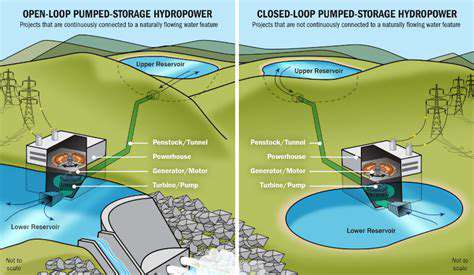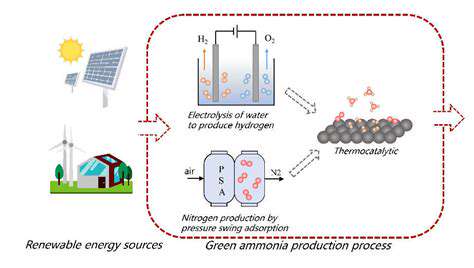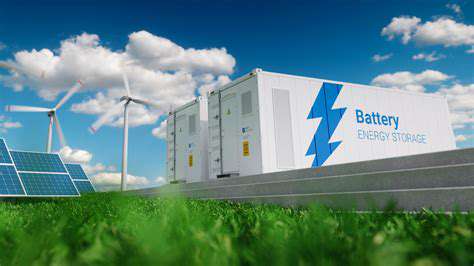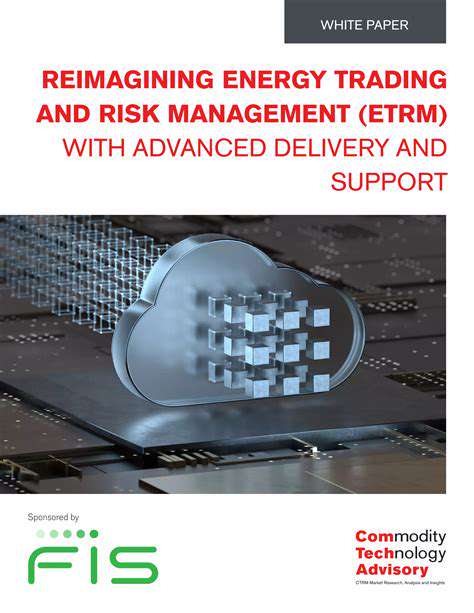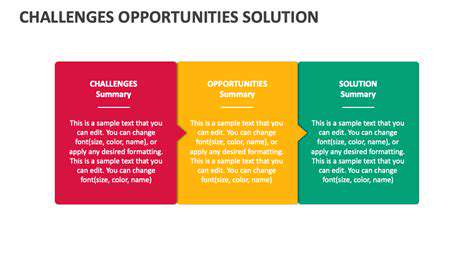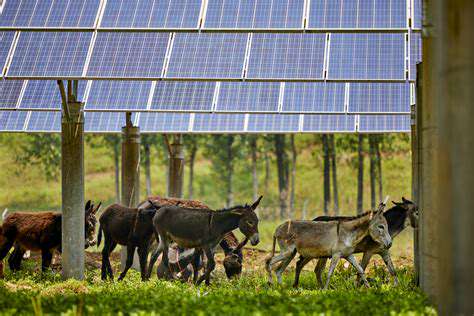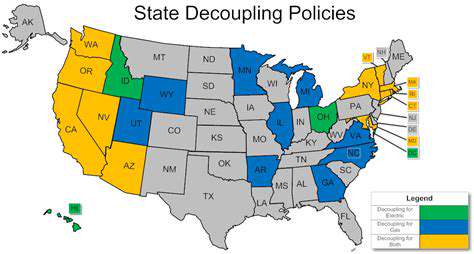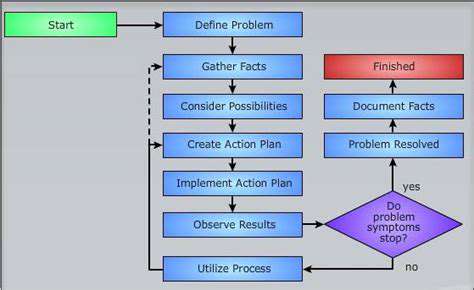Transmission for Offshore Wind Grid Integration
High Voltage Direct Current: Revolutionizing Offshore Power Transfer
Understanding HVDC Transmission Systems
Modern offshore energy projects increasingly depend on High Voltage Direct Current technology for efficient power transfer across vast distances. Unlike traditional AC systems, HVDC demonstrates superior performance in marine environments, particularly when connecting remote wind farms to mainland grids. The technology's core innovation lies in its conversion process - transforming AC power to DC for transmission, then back to AC at the destination.
This dual conversion process offers several operational benefits. First, it significantly reduces energy losses during transmission. Second, it provides better control over power flow, especially important when dealing with variable renewable sources. These advantages become particularly pronounced over distances exceeding 50 kilometers, making HVDC the preferred choice for most modern offshore installations.
Why Offshore Projects Favor HVDC
The marine environment presents unique challenges that AC systems struggle to address effectively. HVDC's immunity to capacitive charging current - a major limitation of AC cables in water - allows for much longer submarine cable runs without intermediate compensation. Additionally, the technology's ability to maintain stable voltage profiles makes it ideal for connecting asynchronous grids or weak grid connections common in coastal areas.
Comparative Advantages in Marine Applications
When evaluating transmission options, engineers consider several critical factors where HVDC outperforms AC:
- Up to 30-50% lower energy losses over equivalent distances
- Reduced cable infrastructure requirements (single conductor vs three-phase)
- Superior fault isolation capabilities
- Minimal reactive power requirements
These technical benefits translate into tangible economic advantages. Project developers report up to 20% lower lifetime costs for HVDC systems in offshore applications compared to AC alternatives.
System Architecture and Components
A complete HVDC transmission system comprises several specialized elements working in concert:
- Converter stations with advanced thyristor or IGBT technology
- DC smoothing reactors
- Sophisticated control and protection systems
- Specialized submarine cable systems
Modern installations increasingly incorporate modular multilevel converter (MMC) designs, which offer superior harmonic performance and faster response to grid disturbances.
Enabling the Renewable Energy Transition
The flexibility of HVDC systems makes them particularly valuable for integrating variable renewable generation. Advanced control algorithms can compensate for rapid output fluctuations from offshore wind farms, maintaining grid stability even during sudden weather changes. This capability will prove increasingly important as renewable penetration levels continue to rise globally.
Emerging Technological Developments
The HVDC sector continues to evolve with several promising innovations:
- Development of 800kV and higher voltage systems for ultra-long-distance transmission
- Integration of superconducting cable technologies
- Advanced grid-forming converter controls for enhanced stability
- Hybrid AC/DC grid architectures
These advancements promise to further improve efficiency while reducing the environmental footprint of offshore energy transmission.
Subsea Cable Systems: Engineering for the Marine Environment
Diverse Cable Solutions for Varied Conditions
Modern offshore projects utilize several specialized cable types, each optimized for specific marine conditions. The selection process considers multiple technical and environmental factors:
| Cable Type | Depth Rating | Temperature Range | Typical Applications |
|---|---|---|---|
| XLPE Insulated | Up to 1000m | -5°C to +90°C | Moderate depth wind farms |
| EPR Insulated | Beyond 1000m | -15°C to +105°C | Deepwater projects |
| MI Insulated | Unlimited | -40°C to +150°C | High-reliability applications |
Material science advancements continue to push the boundaries of cable performance, with new polymer compounds offering enhanced durability in harsh conditions.
Comprehensive Deployment Considerations
Successful subsea cable installation requires meticulous planning across multiple dimensions:
Route Planning Essentials
Engineers must carefully chart cable paths to avoid numerous potential hazards:
- Existing seabed infrastructure (pipelines, communication cables)
- Shipping lanes and anchorage areas
- Geological fault lines
- Environmentally sensitive habitats
Installation Methodologies
The choice of installation technique depends on seabed conditions:
- Plough burial - Effective in soft sediments
- Jet trenching - Suitable for cohesive soils
- Rock placement - For areas requiring extra protection
Each method presents unique engineering challenges and environmental considerations that must be carefully evaluated during project planning.
Long-Term Reliability Management
Ensuring decades of trouble-free operation requires:
- Advanced corrosion protection systems
- Continuous monitoring via distributed temperature sensing
- Regular ROV inspections
- Comprehensive cable fault location systems
These measures combine to deliver the 25+ year service life expected from modern offshore cable systems.
Evolving Grid Architectures for Renewable Integration

Modern Approaches to Renewable Integration
The transition to renewable-dominated grids demands innovative system architectures. Three key strategies are emerging as particularly effective:
- Dynamic grid reinforcement - Deploying modular, flexible infrastructure that can adapt to changing generation patterns
- Multi-terminal HVDC networks - Creating interconnected offshore grids to share resources across regions
- Hybrid AC/DC microgrids - Localized systems that can operate independently when needed
The Changing Fuel Landscape
As traditional thermal generation declines, grid operators must address new challenges:
- Reduced system inertia affecting frequency stability
- Changed fault current characteristics
- Altered voltage regulation requirements
These changes require fundamental redesigns of protection systems and operational protocols to maintain reliability.
Intelligent Grid Technologies
Advanced monitoring and control systems now enable:
- Millisecond-level response to generation fluctuations
- Predictive maintenance using AI algorithms
- Automated reconfiguration during contingencies
These capabilities are transforming grid operations from reactive to predictive paradigms.
Balancing Supply and Demand
Modern integration solutions employ multiple complementary approaches:
| Solution | Response Time | Duration | Typical Application |
|---|---|---|---|
| Battery Storage | Milliseconds | Hours | Frequency regulation |
| Demand Response | Minutes | Hours | Peak shaving |
| Hydrogen Storage | Hours | Days/Weeks | Seasonal balancing |
This multi-layered approach ensures reliability across all timescales.
Policy Frameworks Enabling Transition
Effective integration requires supportive regulatory environments featuring:
- Streamlined permitting processes for transmission projects
- Technology-neutral market mechanisms
- Performance-based regulation
- Coordinated regional planning
Jurisdictions implementing these measures see significantly faster renewable adoption without compromising reliability.
Financial Models for Sustainable Transition
The economics of grid modernization demonstrate:
- Long-term cost savings through avoided fuel costs
- Increased asset utilization through smart operation
- New revenue streams from ancillary services
- Reduced environmental compliance costs
These factors combine to create compelling business cases for comprehensive grid modernization programs.
